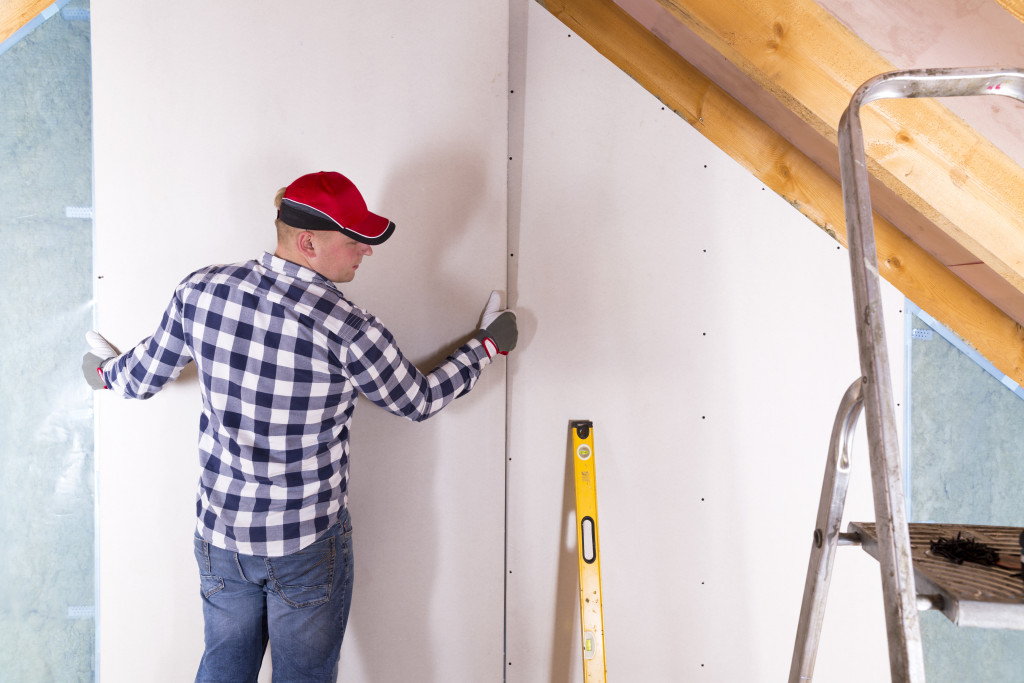- Conduct market research to identify the target market and competition.
- Develop a business plan that includes details about the business model, target market, marketing strategies, pricing and financial projections.
- Obtain licenses, certifications and liability insurance required for legal operation.
- Invest in quality equipment and materials.
- Build strong relationships with customers and suppliers.
Starting a dry-lining business can be great if you have the right skills and knowledge. Dry lining involves the installation of plasterboards, insulation, and suspended ceilings to create a smooth and even surface for decorating. If you are interested in starting a dry-lining business, there are a few essential tips you should keep in mind to ensure that your venture succeeds.
1. Conduct Market Research
Before starting your dry-lining business, it is essential to conduct market research to identify your target market and understand your competition. This research will help you determine the demand for your services, the prices your competitors charge, and the best way to differentiate your business from others in the market.
To conduct market research, you can look at online directories, trade publications, and industry associations to identify potential customers and competitors. You can also speak with contractors, builders, and architects in your local area to better understand the market and identify potential opportunities.
2. Develop a Business Plan

Once you have conducted market research, the next step is to develop a business plan. This plan should include your business model, target market, marketing strategies, pricing, and financial projections.
When developing your business plan, it is essential to be realistic about your goals and projections. Consider factors such as the cost of materials, labor, overhead, and potential risks and challenges your business may face.
3. Obtain the Necessary Licenses and Certifications
You must obtain the necessary licenses and certifications to operate a dry-lining business. This is because dry-lining involves working with potentially hazardous materials such as asbestos, which requires special safety precautions and accreditation. In addition to licenses and certifications, obtaining liability insurance for your business in case of accidents or damages is essential. This will protect you from financial losses in the event of a lawsuit.
Here are some tips for obtaining licenses and certifications:
Research the Requirements for Licensing and Certification
Before starting a dry-lining business, you must understand what licenses and certifications you need. Research the relevant governing body in your region — such as the Department of Labor or another local authority — to understand what permits, licenses, or certificates are required for legal operation.
Apply for the Necessary Licenses and Certifications
Once you know what licenses and certifications you need, apply for them with the relevant governing body. Depending on your location, this may be a straightforward process or involve more intricate steps, such as completing an application form or providing further documentation.
Acquire the CITB Test for Dry Liners
In addition to the necessary licensing and certification, acquiring a reliable CITB test for dry liners is essential. The Construction Industry Training Board (CITB) provides this test, which assesses your knowledge of dry-lining systems and techniques. Taking and passing this test will show potential customers that you are knowledgeable in the field and an experienced professional.
Obtain Liability Insurance
In addition to licenses and certifications, having liability insurance for your business is essential. This protects you and your clients from any potential losses or damages that may occur during a project, ensuring both parties are covered in case of an issue. Speak with an insurance provider to find out more and discuss the best policy for your business.
4. Invest in Quality Equipment and Materials

Investing in quality equipment and materials is essential to provide your customers with high-quality services. This may include drills, saws, plastering trowels, high-quality plasterboards, insulation, and suspended ceiling systems.
When investing in equipment and materials, it is essential to consider factors such as cost, durability, and ease of use. You should also research different suppliers to find the best deals and ensure you get the best value for your investment.
5. Develop Strong Relationships with Customers and Suppliers
Finally, to ensure the long-term success of your dry-lining business, it is vital to develop strong relationships with customers and suppliers. This means providing high-quality services, being responsive to customer needs, and building a reputation for reliability and professionalism.
You should also work closely with suppliers to get the best prices and access the latest products and technologies. Building solid relationships with customers and suppliers can position your business for long-term success.
Final Words
Starting a dry-lining business can be a challenging but rewarding venture. By conducting market research, developing a business plan, obtaining the necessary licenses and certifications, investing in quality equipment and materials, and building solid relationships with customers and suppliers, you can position your business for success. And don’t forget to consider taking the CITB test for dry liners to demonstrate your expertise and enhance your business’s reputation.



